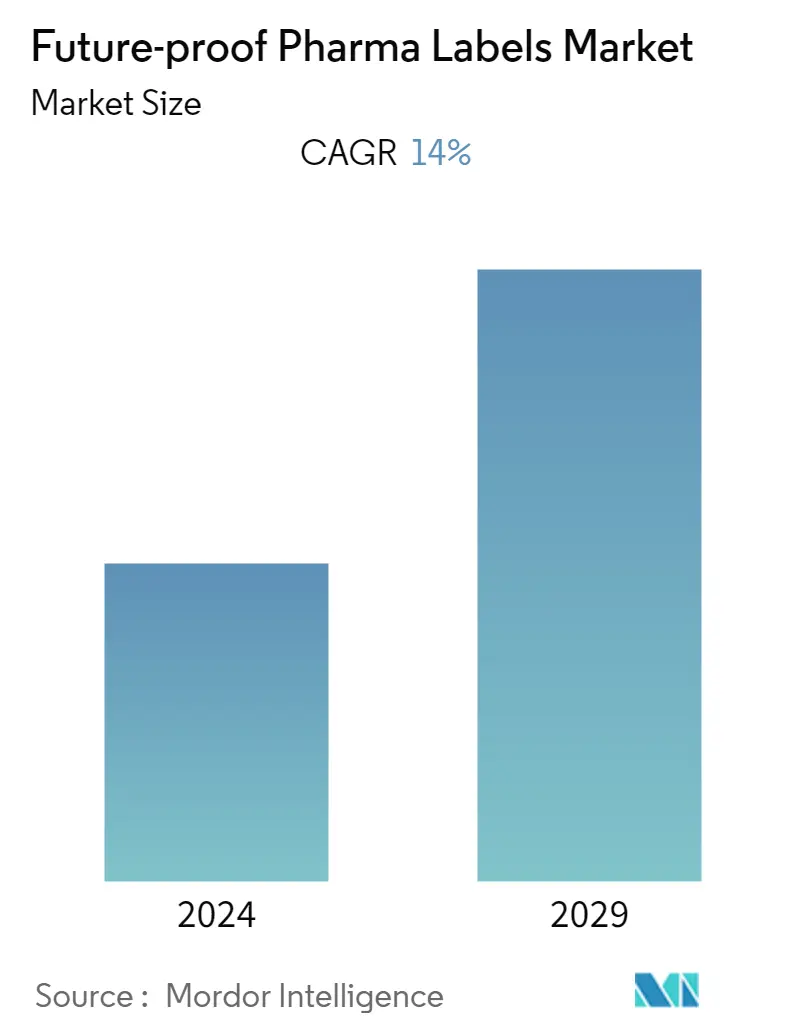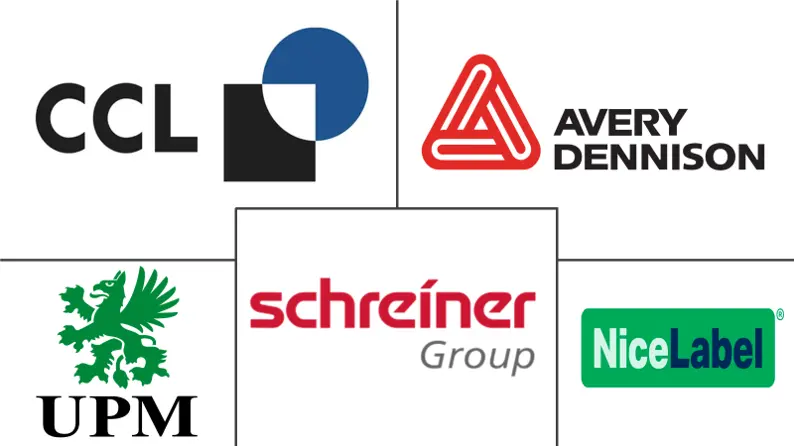Market Size of Future-proof Pharma Labels Industry

| Study Period | 2019 - 2029 |
| Base Year For Estimation | 2023 |
| CAGR | 14.00 % |
| Fastest Growing Market | Asia Pacific |
| Largest Market | North America |
| Market Concentration | High |
Major Players
*Disclaimer: Major Players sorted in no particular order |
Need a report that reflects how COVID-19 has impacted this market and its growth?
Future-proof Pharma Labels Market Analysis
The Future-proof Pharma Labels Market is expected to register a CAGR of 14% during the forecast period from 2021 to 2026. The future-proof labeling technology is set to transform the pharmaceutical industry during the forecast period, including supply-chain management, cold-chain monitoring, track-and-trace compliance, and authentication. With the usage of technologies such as RFID and NFC, among others, drugs and medical devices are digitally visible, traceable, and well monitored, from the manufacture, all the way through, to retail shelves, and even to the consumer's homes.
Major issues affecting the pharma sectors are the increasing costs associated with non-adherence and counterfeiting, which are expected to be solved by these technologies. Moreover, these issues primarily align with the governments across the globe, that are trying to fight piracy and improve the costly non-adherence. Furthermore, according to the World Health Organization, globally, counterfeiting costs the pharma industry USD 75 billion every year. The integration of these technologies into pharmaceutical labels is currently the most significant opportunity for the vendors as the market is expected to grow much further. Some brands have already begun using RFID technology to authenticate prefilled syringes and track the time and temperature of products during shipping.
- Moreover, NFC-enabled pharmaceutical products are witnessing higher demand among organizations, primarily owing to their ability to improve patient engagement using a bi-directional communication channel and fostering co-vigilance. The NFC tags used for the solution will provide real-time temperature sensing and data logging across the supply chain essential for the transportation of pharmaceuticals and other temperature-sensitive products that can be adversely affected by conditions in transit. NFC label can carry more data than a barcode or QR code and provide access to a virtually unlimited realm of additional information. Authentication, patient and equipment safety, tamper detection, and educational information are chief benefits, but the potential to personalize consumer interaction is predominantly helpful for pharmaceuticals.
- Manufacturers in the industry, however, are on the lookout for a more reliable way other than RFID for the process of manufacturing control in the pharmaceutical industry, as well as for product tracking & tracing of drug quality. This has led to the initiation of the next phase of adoption of Smart technologies, driven by the latest technologies, such as the Internet of Things (IoT) and the near-field communication (NFC) technology that is emerging as an incredible array of essential operations in the industry. In August 2019, WISeKey International Holding Ltd, a cybersecurity IoT platform company, announced the launch of its patented anti-counterfeiting NFC device that is designed to protect the pharmaceutical industry from the escalating counterfeit problem.
- Although the pharma industry has been fighting against COVID-19 with drugs and vaccines, the pharmaceutical industry's work has also been affected by the pandemic, primarily through the disruption of supply chains. A survey by Pharmaceutical Technology on the pharma supply chain to maintain adequate supplies of medicines amid the COVID-19 pandemic resulted in a relatively even split in opinion, with 24% of respondents stating they are incredibly confident medicine supplies won't be disrupted, while 22% were extremely doubtful. This difference of opinion continues in the less extreme answers, with 23% of voters being somewhat confident, and 20% being somewhat questionable. This drives the need for robust and future-proof labeling systems for the efficient functioning of the pharma supply chain.
